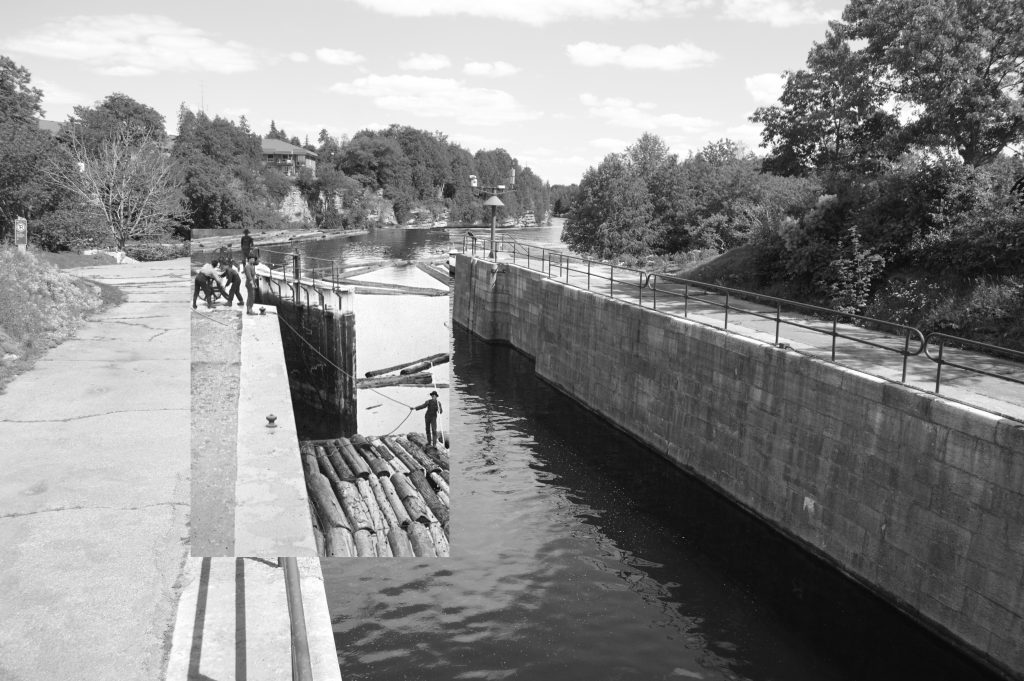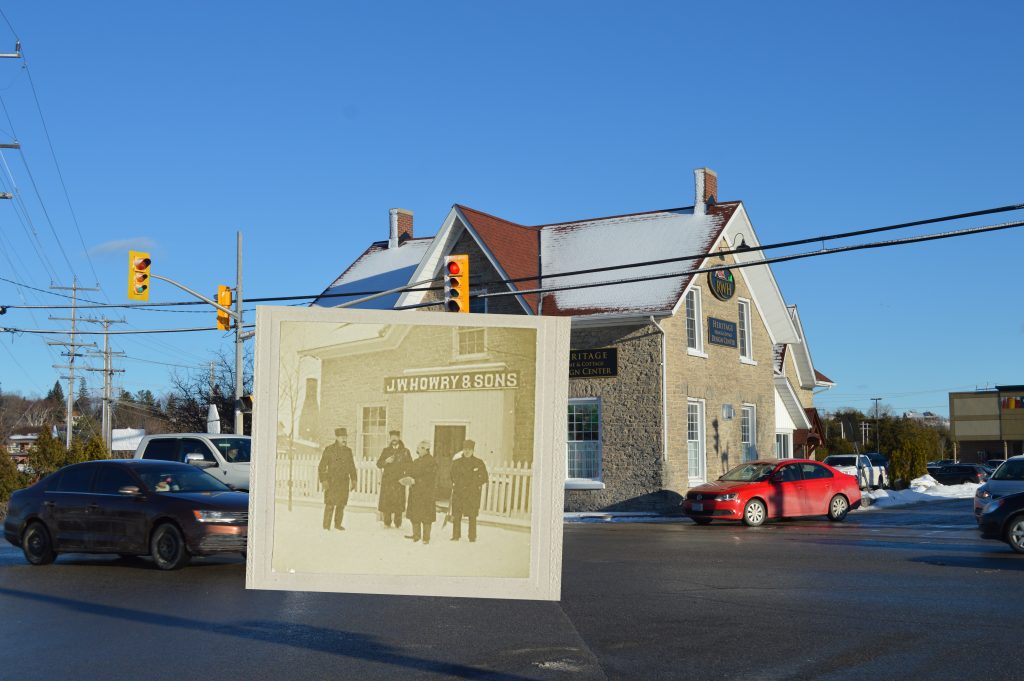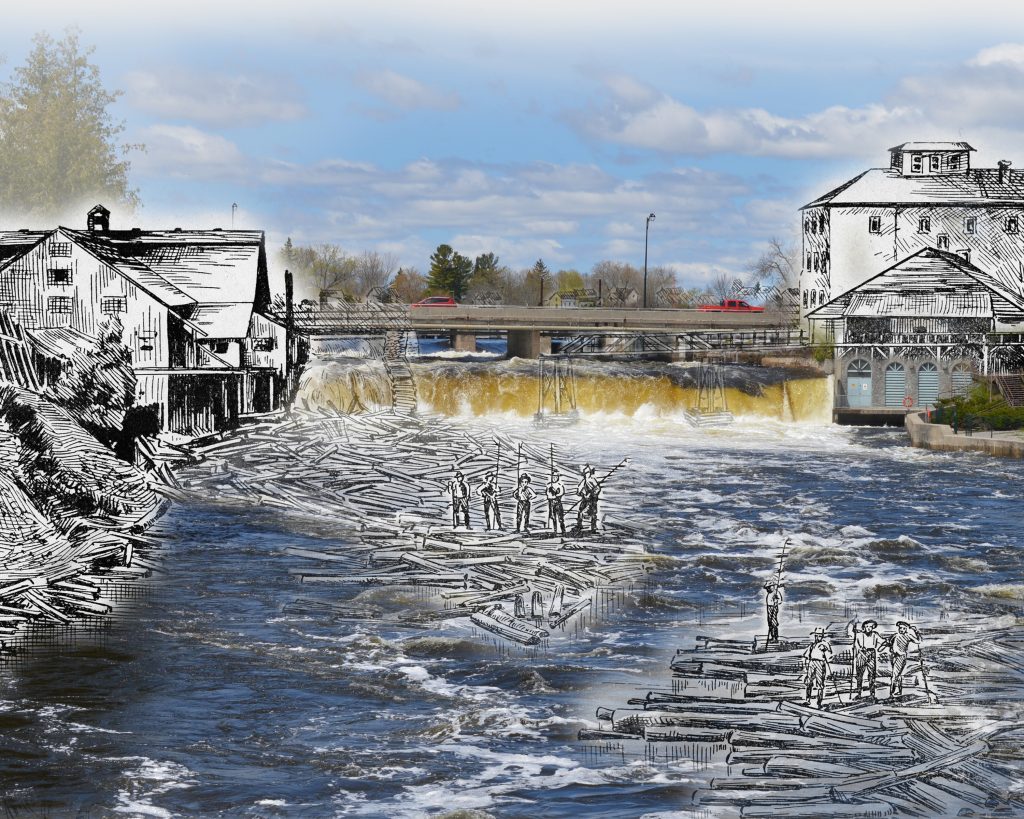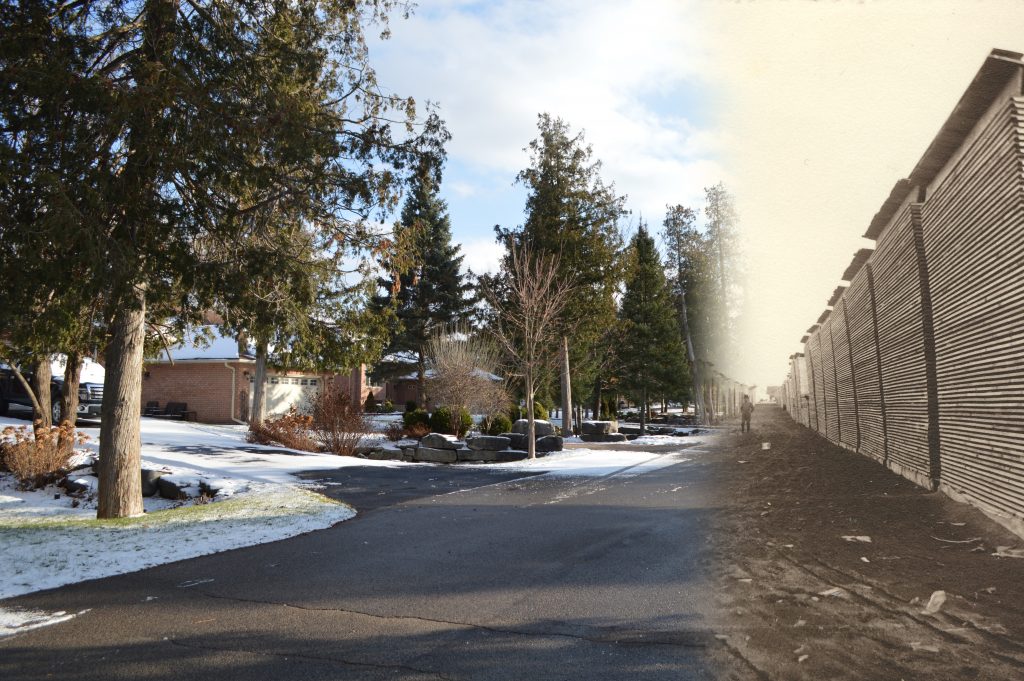Timber Barons, River Drivers and Shantymen

Floating sawlogs through the Fenelon Locks (Original photograph: c. 1920 combined with modern photograph: 2017)
Forest industries were the only large businesses in the nineteenth century Kawarthas. Virgin forests contained scattered trees that were valuable enough to bear the cost of transatlantic transportation in an age of muscle and wind power: mostly construction timbers, masts and other materials for ship building.

Office of R.C. Smith’s Red Mill (Original photograph: c. 1894 combined with modern photograph: 2017)

George Thompson’s Big Log Jam (Sketch: Fenelon Falls Shewing Capt. Thompson’s Big Jam of Saw Logs from photo taken in 1886 combined with modern photograph: 2017)
Each fall shanty crews set up camp where they would cut, felled the giants with axes, skidded and hauled them with horses and oxen to the nearest creek, then floated them downstream using the spring freshet. Once they reached larger lakes they were assembled into rafts (or later loaded on railways), which had to be disassembled for every rapid. Once they reached Quebec City, timbers were loaded on ships for passage to Britain. With the settlement of the prairies, an American market emerged for sawn lumber, which was initially a way of utilizing logs that were not good enough for the British trade, but
by the end of the century grew to be the dominant branch. For the timber barons, the forest industries were tantamount to gambling. Price fluctuations were often greater than the profit margin and few were wealthy enough to withstand the loss of a raft. Most firms, including the three largest to operate on the Trent Watershed went broke. But a fortune could be made by shrewd and lucky businessmen. Mossom Boyd, who came to Bobcaygeon as a teenaged orphan, was the region’s timber baron who made himself a multimillionaire in an era when a dollar a day was the common wage.
Modern photography and image combining: Sharon Johnson.
Copyright: Maryboro Lodge.


